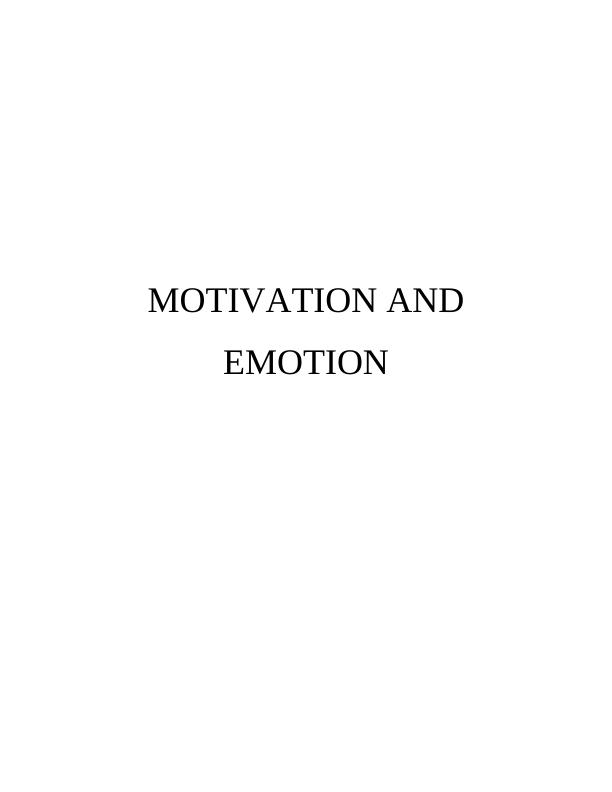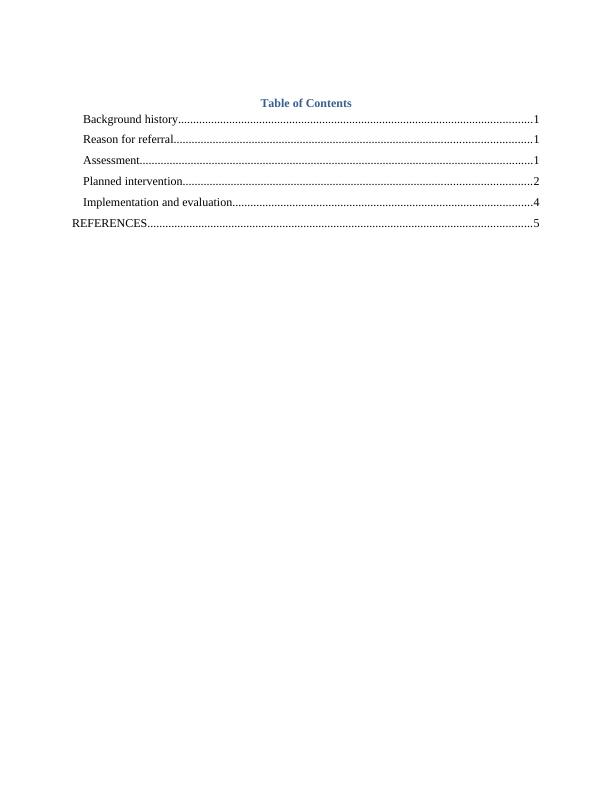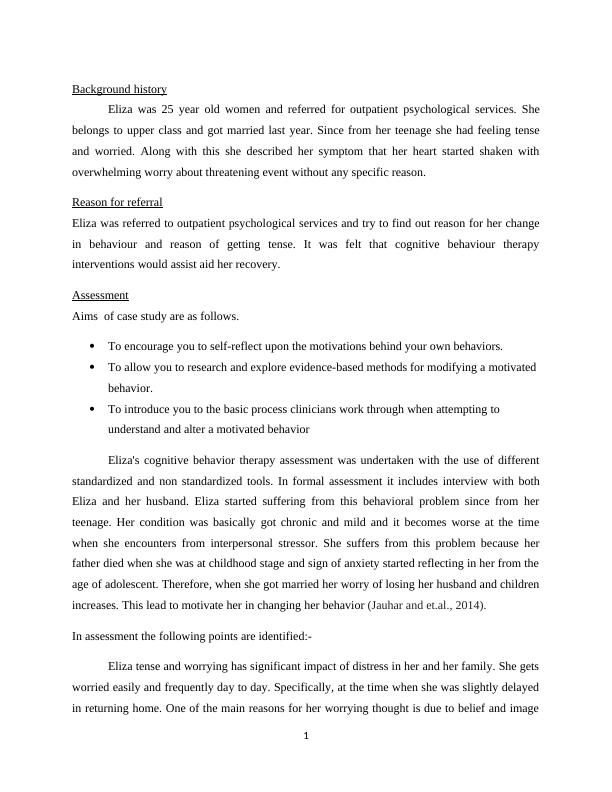Motivation and Emotion : Case Study
Added on 2020-07-22
11 Pages2458 Words48 Views
MOTIVATION ANDEMOTION

Table of ContentsBackground history......................................................................................................................1Reason for referral.......................................................................................................................1Assessment...................................................................................................................................1Planned intervention....................................................................................................................2Implementation and evaluation....................................................................................................4REFERENCES................................................................................................................................5

Background historyEliza was 25 year old women and referred for outpatient psychological services. Shebelongs to upper class and got married last year. Since from her teenage she had feeling tenseand worried. Along with this she described her symptom that her heart started shaken withoverwhelming worry about threatening event without any specific reason.Reason for referralEliza was referred to outpatient psychological services and try to find out reason for her changein behaviour and reason of getting tense. It was felt that cognitive behaviour therapyinterventions would assist aid her recovery.AssessmentAims of case study are as follows. To encourage you to self-reflect upon the motivations behind your own behaviors. To allow you to research and explore evidence-based methods for modifying a motivated behavior. To introduce you to the basic process clinicians work through when attempting to understand and alter a motivated behaviorEliza's cognitive behavior therapy assessment was undertaken with the use of differentstandardized and non standardized tools. In formal assessment it includes interview with bothEliza and her husband. Eliza started suffering from this behavioral problem since from herteenage. Her condition was basically got chronic and mild and it becomes worse at the timewhen she encounters from interpersonal stressor. She suffers from this problem because herfather died when she was at childhood stage and sign of anxiety started reflecting in her from theage of adolescent. Therefore, when she got married her worry of losing her husband and childrenincreases. This lead to motivate her in changing her behavior (Jauhar and et.al., 2014).In assessment the following points are identified:-Eliza tense and worrying has significant impact of distress in her and her family. She getsworried easily and frequently day to day. Specifically, at the time when she was slightly delayedin returning home. One of the main reasons for her worrying thought is due to belief and image1

about her family and herself. It also occurs in certain situation such as Eliza get aggressive at thetime of dealing with stressful situation and get excessively conscientious. Her behavior changebecause of her family member and she gets stressed at the time when her family members notaround. It frequently occurs at the time of carrying out daily working activity. There are some factors due to which she emerged from the characteristic of worrying thatis a source of motivation, a positive personality traits, a way of preventing negative outcomesand an aid to problem solving (Tarrier and Johnson, 2015). At the time when she gets highlyanxious her face became pale and her hands became cold. After performing such behavior herfamily member get worried and unable to control her. Source of motivation for getting worried isinsecurity when she feels after staying far from home for longer time. Further self esteem worryand future worry motivates her in changing her behavior. Worrying about future continuereinforcing lead to create problem for Eliza behavior get motivate at the time when she was unable to express her feeling infront of her family members. Further she continuously thinks about her and her family futurewhich motivates her to work. Due to this behavior she felt difficulty in sleeping and awoke aftertwo to three hours. In intervention it is important to motivate Eliza so that she can overcomefrom this problem (Andersson and et.al., 2014). Here in intervention cognitive behaviouraltheories is applied because this theory suggest that anxiety disorder from which Eliza is sufferingis associated with distorted perception of danger related information. Eliza have lots of image offear in her mind which make her tense and worry and due to this reason she was unable to copeup with her day to day activity leads to bring change in behavior.Planned interventionIntervention is the program or strategy that aims at changing the particular problematicbehavior of an individual. Thus, it is usually undertaken to address the behavioral problem of theperson so as to bring desired changes. Evidencing from the research of Khodarahimi and Pole,(2010), it is stated that single baseline is the best way to evaluate changes in an individualbehavior. It is because, in this technique, clinicians use both baseline measures and results afterthe intervention carried out so as to make comparative analysis. If after the treatment, significantresults found in individual behavior than it simply means that planned intervention is extremelyeffective to bring change in particular problematic behavior. In this research, researcher also took2

End of preview
Want to access all the pages? Upload your documents or become a member.
Related Documents
Individual Case Study Analysislg...
|9
|3507
|92
Medical and Health Services Managerslg...
|9
|2401
|18
Case Study: Mental Health Safe.lg...
|8
|2547
|6
English Compositionlg...
|3
|627
|60
Impact of Domestic Violence on Mental Health: A Case Studylg...
|8
|2316
|135
Clinical Case Assessment: Finding Relation with DSM 5 Criterialg...
|9
|528
|375
